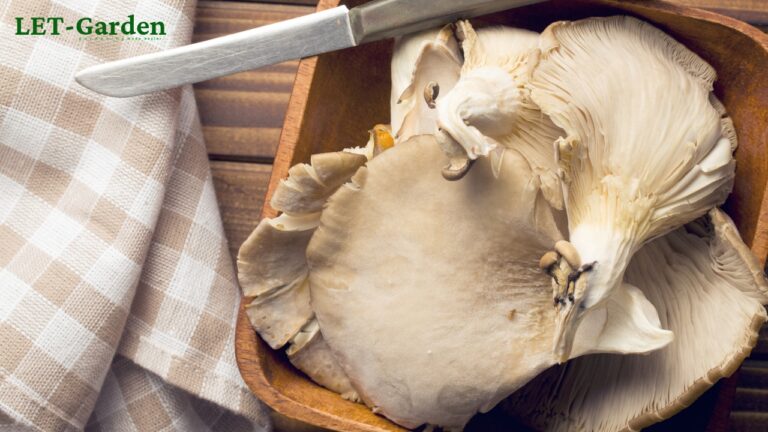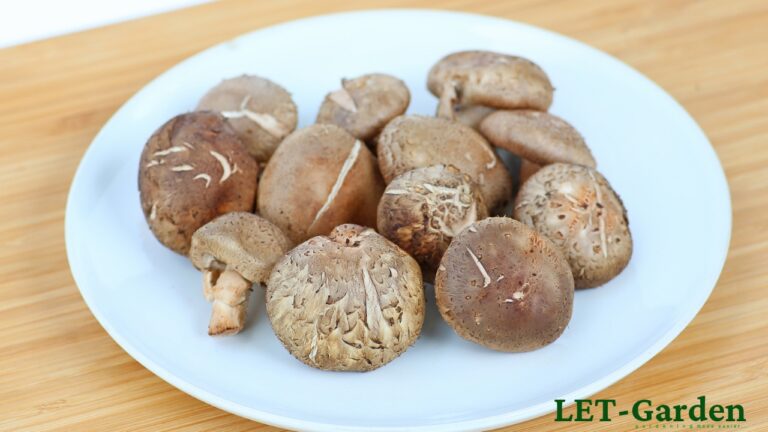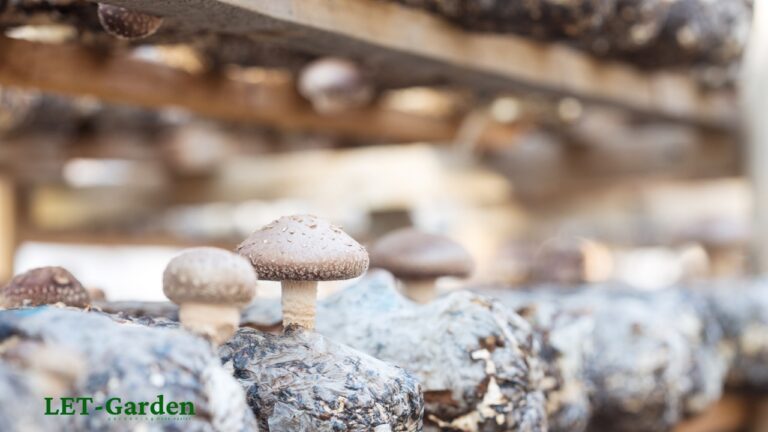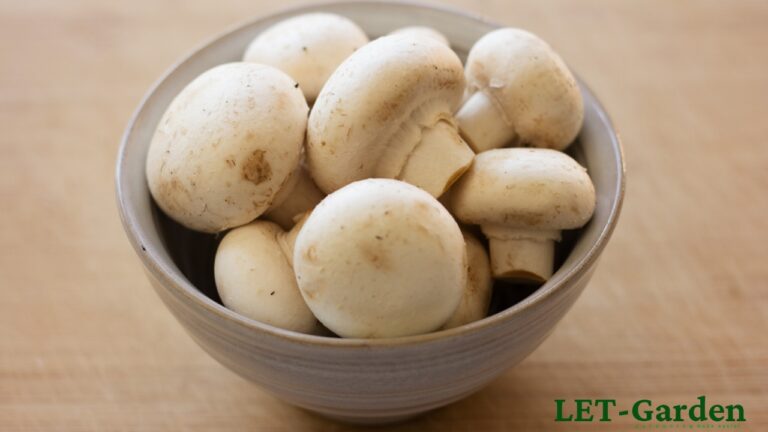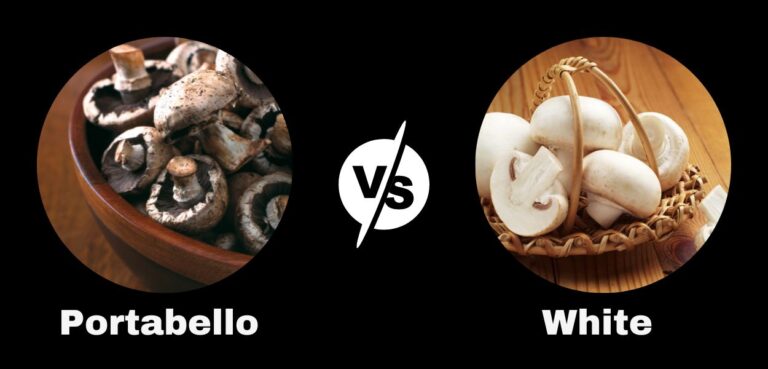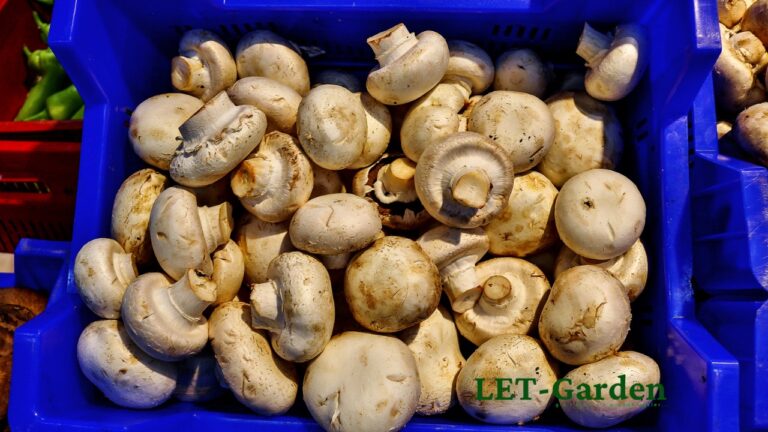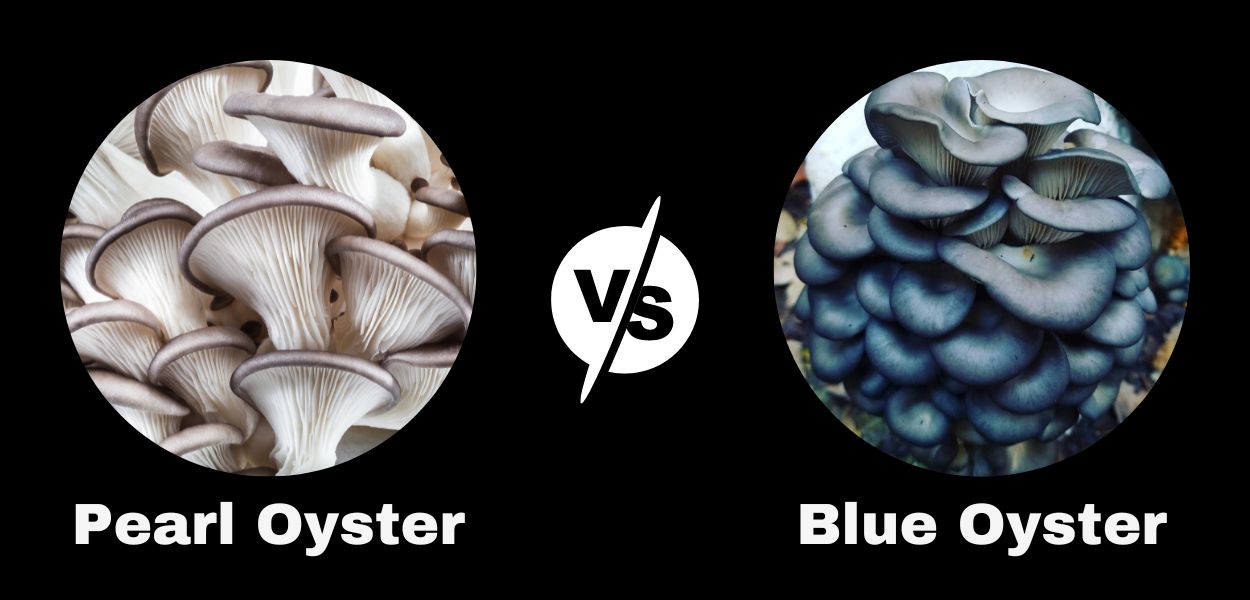
Mushrooms are a fascinating type of fungi that come in a variety of shapes, sizes, and colors. Among the many species of edible mushrooms, the Pearl Oyster Mushroom and the Blue Oyster Mushroom are two of the most popular varieties. These mushrooms are not only delicious but they are also packed with nutrients that can help boost overall health. In this blog post, we will explore the differences and similarities between Pearl Oyster Mushroom and Blue Oyster Mushrooms in terms of their appearance, nutritional value, culinary use, health benefits, cultivation, and sustainability. Whether you are a mushroom enthusiast or simply curious about the world of fungi, this post will provide you with a comprehensive overview of these two delicious mushrooms. So, let’s dive in and discover what makes pearl oyster mushroom vs blue oyster mushroom unique!
The Appearance of Pearl and Blue Oyster Mushroom
The Pearl Oyster Mushroom (Pleurotus ostreatus) and the Blue Oyster Mushroom (Pleurotus columbinus) are two visually stunning fungi that are often used in culinary dishes. Here are some of the physical characteristics that set these two mushrooms apart:
Physical Characteristics of Pearl Oyster Mushroom
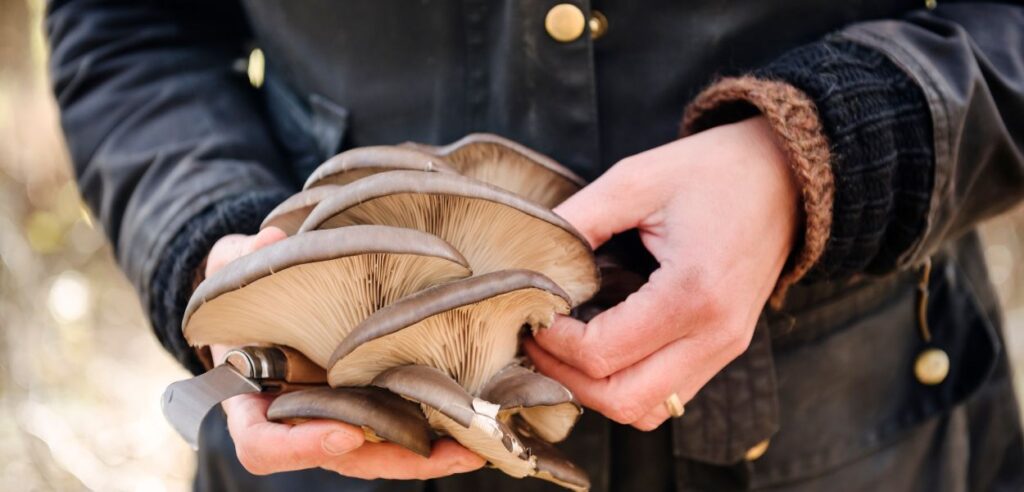
- Cap: The cap of the Pearl Oyster Mushroom is typically small to medium-sized, measuring around 5 to 15 cm in diameter. The cap is fan-shaped with a slightly wavy margin, and the surface is smooth and velvety.
- Gills: The gills of the Pearl Oyster Mushroom are decurrent, which means they run down the stem. The gills are thin and closely spaced, and they are white to cream in color.
- Stem: The stem of the Pearl Oyster Mushroom is usually short and thick, measuring around 2 to 4 cm in length. The stem is off-white in color and has a firm texture.
Physical Characteristics of Blue Oyster Mushroom
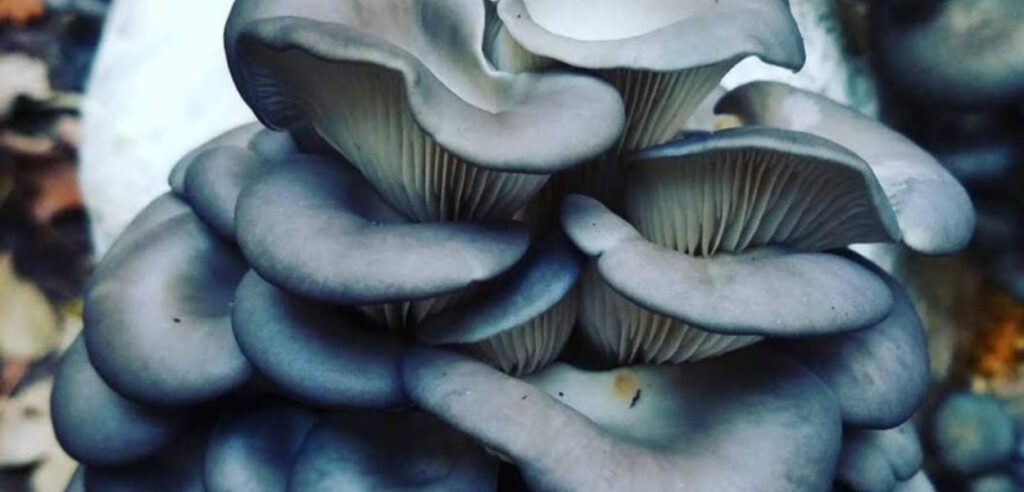
- Cap: The cap of the Blue Oyster Mushroom is typically small to medium-sized, measuring around 5 to 12 cm in diameter. The cap is fan-shaped with a slightly wavy margin, and the surface is smooth and velvety. The color of the cap ranges from dark blue to grayish-blue, with a lighter-colored margin.
- Gills: The gills of the Blue Oyster Mushroom are decurrent, which means they run down the stem. The gills are thin and closely spaced, and they are white to light blue in color.
- Stem: The stem of the Blue Oyster Mushroom is usually short and thick, measuring around 2 to 4 cm in length. The stem is off-white in color and has a firm texture.
Comparison of their Appearances
While both mushrooms share some similarities in terms of their physical characteristics, the most obvious difference between the two is their color. The Pearl Oyster Mushroom is typically white to light gray in color, while the Blue Oyster Mushroom has a distinct blue hue. Additionally, the caps of the Blue Oyster Mushroom are slightly smaller than those of the Pearl Oyster Mushroom. However, both mushrooms have a fan-shaped cap with a slightly wavy margin and decurrent gills. Overall, both mushrooms are visually stunning and make a great addition to any dish that requires a pop of color.
Nutritional Value of Pearl Oyster vs Blue Oyster Mushroom
Mushrooms are often praised for their nutritional value, as they are low in calories, fat-free, and contain many essential nutrients. Pearl Oyster Mushroom and Blue Oyster Mushroom are no exception. Let’s take a closer look at the nutrient content of these two mushrooms and how they compare.
Nutrient content in Pearl Oyster Mushroom
- High in protein: Pearl Oyster Mushroom contains around 3.3 grams of protein per 100 grams, making it an excellent source of protein for vegetarians and vegans.
- Rich in vitamins and minerals: Pearl Oyster Mushroom is a good source of B vitamins, including thiamine, riboflavin, and niacin. It also contains minerals such as potassium, iron, and copper.
- Low in calories: Pearl Oyster Mushroom contains only 35 calories per 100 grams, making it an ideal food for weight management.
Nutrient content in Blue Oyster Mushroom
- High in antioxidants: Blue Oyster Mushroom is rich in antioxidants such as ergothioneine and glutathione, which can help protect cells from damage caused by free radicals.
- Rich in vitamins and minerals: Blue Oyster Mushroom is a good source of B vitamins, including thiamine, riboflavin, and niacin. It also contains minerals such as potassium, iron, and phosphorus.
- Low in calories: Blue Oyster Mushroom contains only 33 calories per 100 grams, making it a perfect addition to a healthy diet.
Comparison of Their Nutritional Value
Both Pearl Oyster and Blue Oyster Mushrooms are low in calories and high in essential nutrients such as B vitamins and minerals. However, Blue Oyster Mushroom contains more antioxidants, which can help protect against cellular damage caused by free radicals. Additionally, Pearl Oyster Mushroom is slightly higher in protein than Blue Oyster Mushroom, making it a better option for those looking to increase their protein intake. Ultimately, both mushrooms are excellent sources of nutrition and can be enjoyed as part of a healthy diet.
Culinary Use: Cooking Pearl and Blue Oyster Mushrooms
Mushrooms are a versatile ingredient that can be used in a variety of dishes, from soups and stews to stir-fries and salads. Pearl and Blue Oysters are no exception, and their delicate flavor and meaty texture make them a popular choice among chefs and home cooks alike.
How to Prepare Pearl Oyster Mushroom:
Preparing Pearl Oyster Mushroom is easy and straightforward. Follow these simple steps to get started:
Step 1: Clean the mushrooms. Remove any dirt or debris from the mushrooms using a soft brush or a damp paper towel. This will ensure that your mushrooms are clean and free from any unwanted particles.
Step 2: Trim the stems. Check the stems of your mushrooms and trim off any tough or woody parts. You can use a sharp knife or kitchen shears for this step.
Step 3: Slice the mushrooms. Once the stems are trimmed, slice the mushrooms into bite-sized pieces. You can either cook them whole or slice them, depending on your preference.
Step 4: Add flavorings. Pearl Oyster Mushroom pairs well with garlic, shallots, and fresh herbs, making them a delicious addition to pasta dishes, risottos, and vegetable stir-fries. Consider adding your favorite herbs and spices to enhance the flavor of your dish.
Step 5: Cook the mushrooms. To cook the mushrooms, heat up a skillet or pan over medium heat and add a small amount of oil or butter. Once the oil is hot, add the sliced mushrooms and sauté them for a few minutes until they are tender and slightly browned.
Serve and enjoy!
Once cooked, your Pearl Oyster Mushrooms are ready to be served. Add them to your favorite dishes or enjoy them as a side dish. They are versatile and add a unique flavor and texture to any meal.
How to Prepare Blue Oyster Mushrooms:
Preparing Blue Oyster Mushroom is a breeze and can be done in a few simple steps:
- Clean the mushrooms: Start by wiping the Blue Oyster Mushroom caps and stems with a damp cloth or brush to remove any dirt or debris. Avoid washing them as they can absorb excess water and become soggy.
- Slice the mushrooms: Once cleaned, slice the mushrooms into small pieces. You can cut them into thin strips or small chunks, depending on your preference.
- Add to your favorite dishes: Blue Oyster Mushroom has a slightly nutty flavor that pairs well with various vegetables and meat alternatives. Sauté them with onions, garlic, and other vegetables for a healthy and delicious side dish, or use them as a meat substitute in dishes like burgers and tacos.
- Enjoy: Blue Oyster Mushroom can be served hot or cold and is a perfect addition to any meal. Serve them as a side dish or incorporate them into your favorite recipes for a healthy and flavorful twist.
With these simple steps, you can prepare and enjoy Blue Oyster Mushroom in no time. So why not give it a try and add this nutritious and delicious mushroom to your next meal?
Comparison of their Culinary Uses
Both Pearl Oyster and Blue Mushroom are versatile ingredients that can be used in a variety of dishes. Pearl Oyster Mushroom has a delicate flavor and pairs well with a wide range of ingredients, making them a popular choice for many dishes. Blue Oyster Mushroom, on the other hand, has a slightly nutty flavor that can add depth to a dish. While both mushrooms can be sautéed or roasted, Blue Oyster Mushroom is often used in vegan and vegetarian dishes as a substitute for meat.
Other Comparison of the Pearl and Blue Oyster Mushroom
Health Benefits
Both Pearl and Blue Oyster Mushrooms offer a range of health benefits that make them a popular choice among health-conscious individuals. Here is a comparison of the health benefits of these two mushrooms:
Pearl Oyster Mushroom:
- Rich in protein and low in calories, making it an excellent addition to a weight-loss diet
- Contains beta-glucans, a type of soluble fiber that can help lower cholesterol levels and improve heart health
- Contains ergothioneine, an antioxidant that can help protect against oxidative damage and reduce the risk of chronic diseases
- Contains polysaccharides, which have anti-inflammatory and immune-boosting properties
Blue Oyster Mushroom:
- Contains high levels of antioxidants, including ergothioneine, which can help protect against cellular damage and reduce the risk of chronic diseases
- Contains beta-glucans, which can help improve cholesterol levels and boost the immune system
- Has anti-inflammatory properties that can help reduce the risk of chronic diseases, including cancer and heart disease
- Contains polysaccharides, which can help improve gut health and support healthy digestion
Cultivation
Both Pearl and Blue Oyster Mushroom can be easily cultivated at home or on a commercial scale. Here is a comparison of their cultivation methods:
Pearl Oyster Mushroom:
- Grows on a wide range of substrates, including straw, sawdust, and coffee grounds
- Grows well in warm temperatures (around 70-75°F) and high humidity (around 80-90%)
- Requires good air circulation and proper lighting for optimal growth
- Can be grown indoors or outdoors, depending on the grower’s preference
Blue Oyster Mushroom:
- Grows best on hardwood sawdust, straw, or coffee grounds
- Grows well in cool temperatures (around 55-65°F) and high humidity (around 80-90%)
- Requires good air circulation and proper lighting for optimal growth
- Can be grown indoors or outdoors, depending on the grower’s preference
Sustainability
Both Pearl Oyster vs Blue Oyster Mushrooms are considered sustainable food sources, as they are relatively easy to cultivate and require minimal resources. Here is a comparison of their sustainability:
Pearl Oyster Mushroom:
- Grows quickly and can be harvested within a few weeks, making it a highly efficient crop
- Can be grown on a variety of waste materials, such as agricultural byproducts and coffee grounds, reducing the need for new resources
- Has a low carbon footprint compared to other protein sources, such as meat and dairy
- Can be grown year-round, providing a reliable source of food
Blue Oyster Mushroom:
- Grows quickly and can be harvested within a few weeks, making it a highly efficient crop
- Can be grown on a variety of waste materials, such as hardwood sawdust and straw, reducing the need for new resources
- Has a low carbon footprint compared to other protein sources, such as meat and dairy
- Can be grown year-round, providing a reliable source of food
Overall, Pearl Oyster vs Blue Oyster Mushrooms offer numerous health benefits and can be easily cultivated in a sustainable manner. Whether you are a mushroom lover or simply interested in adding more healthy and sustainable foods to your diet, these mushrooms are definitely worth a try.
Final Thoughts
Overall, both Pearl Oyster and Blue Oyster Mushrooms are delicious, and nutritious, and have unique characteristics. They have similar cultivation methods and minimal environmental impact, making them great for eco-conscious individuals. When it comes to culinary use, Pearl Oyster Mushroom is best for soups and stews, while Blue Oyster Mushroom is ideal for stir-fries and grilling. Ultimately, the choice between them depends on personal preference, as both offer unique flavors and health benefits.

Hi, I’m Miles, the lead team member behind Gardeem.com. Besides being a passionate grower and writer, I’m a husband, father and grandfather to three! I started Gardeem in 2017 to provide simple and reliable gardening advice to everyone, regardless of their ability levels.

